This document discusses Web 2.0 technologies and their potential uses and benefits for libraries. It defines Web 2.0 as the second generation of web technologies that focus on user interaction and participation. Examples of Web 2.0 applications mentioned include blogs, wikis, and social bookmarking. The document also prompts attendees to consider how these technologies could help with communications between library staff and address challenges.
![CoFHE 2007 Introduction to Web 2.0 Matt Gallon | e-learning advisor [email_address] web2atcofhe.pbwiki.com www.rsc-wm.ac.uk](https://image.slidesharecdn.com/mattsslides3603/75/Mattsslides-1-2048.jpg)
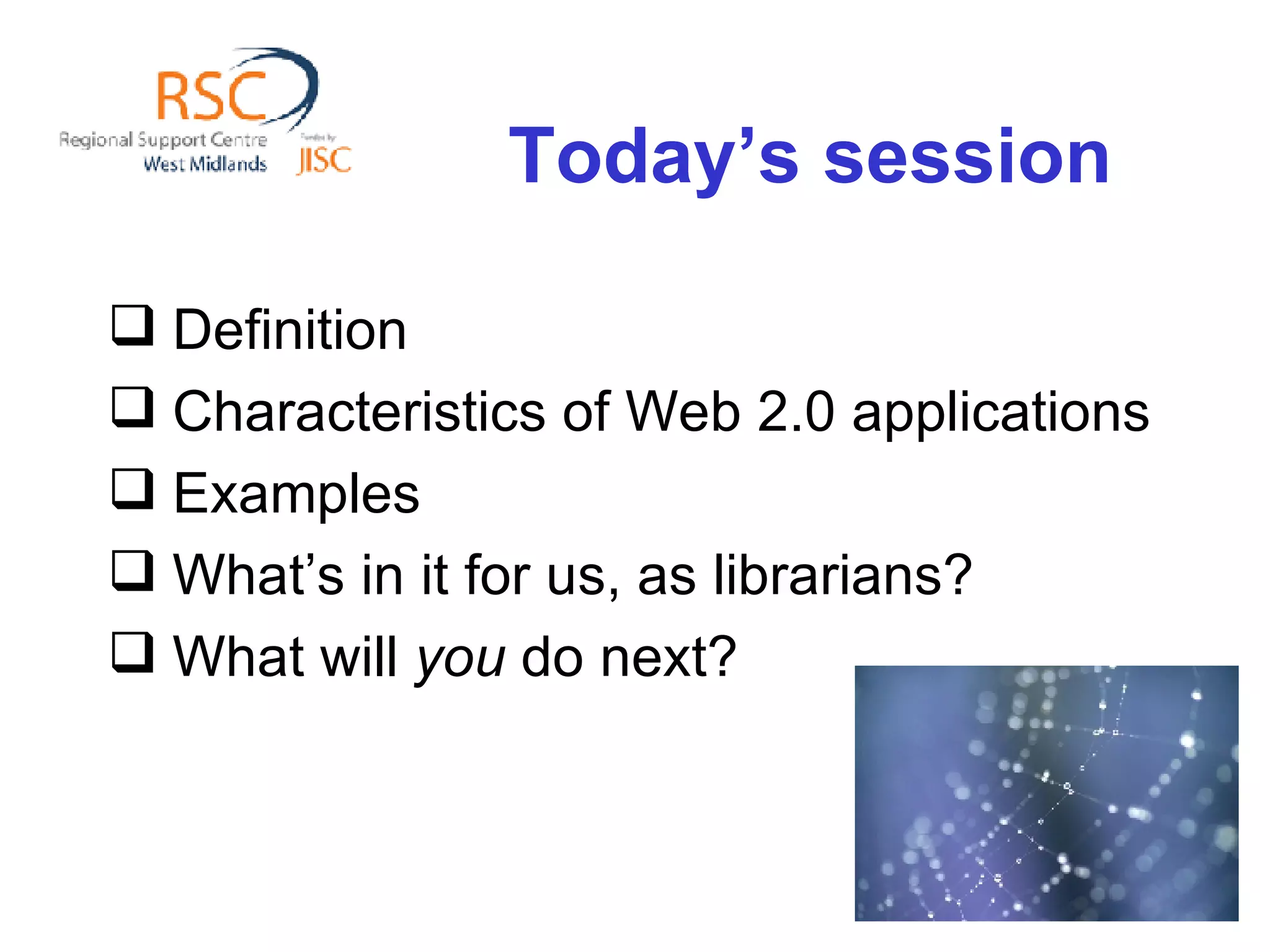
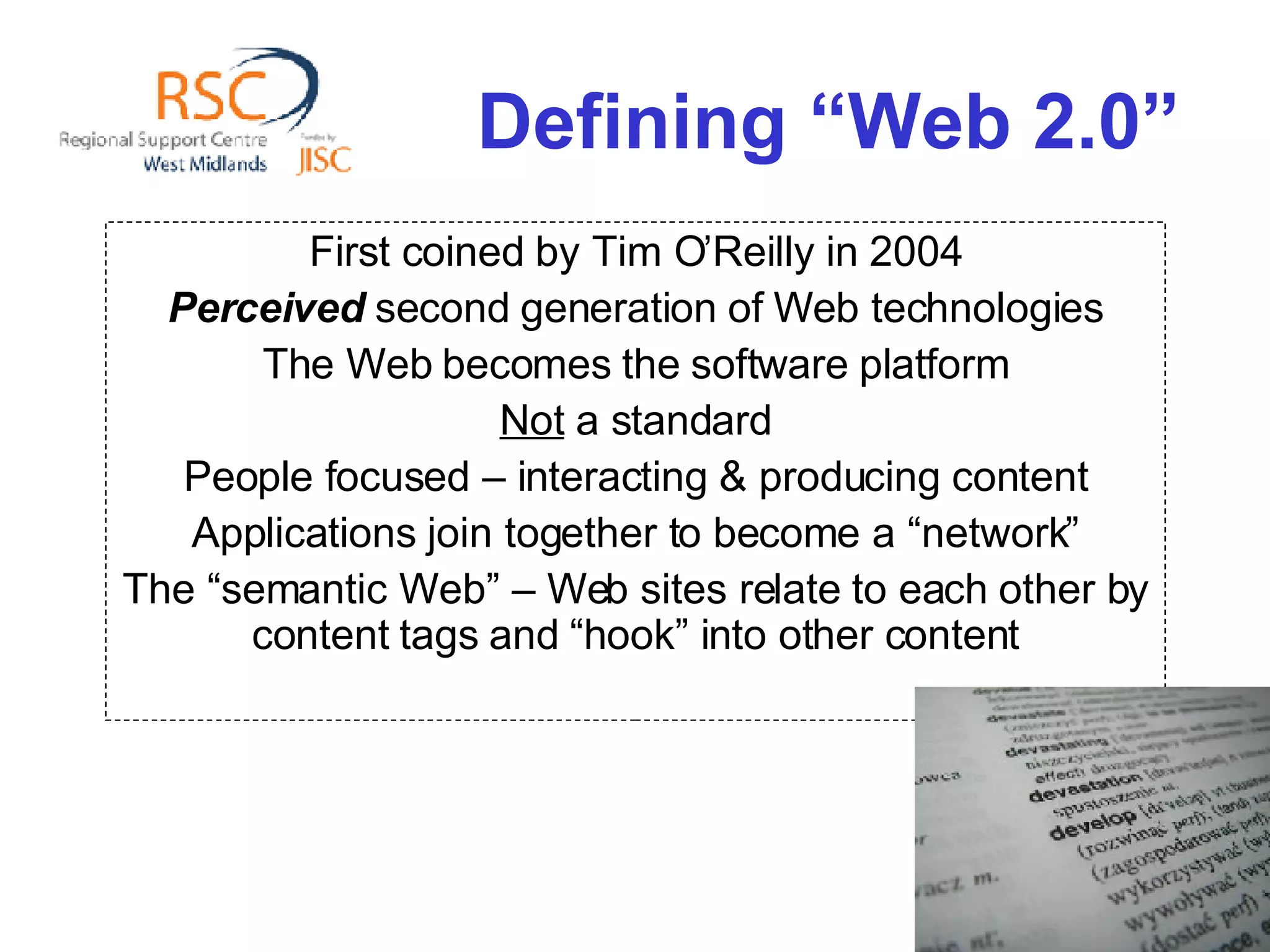
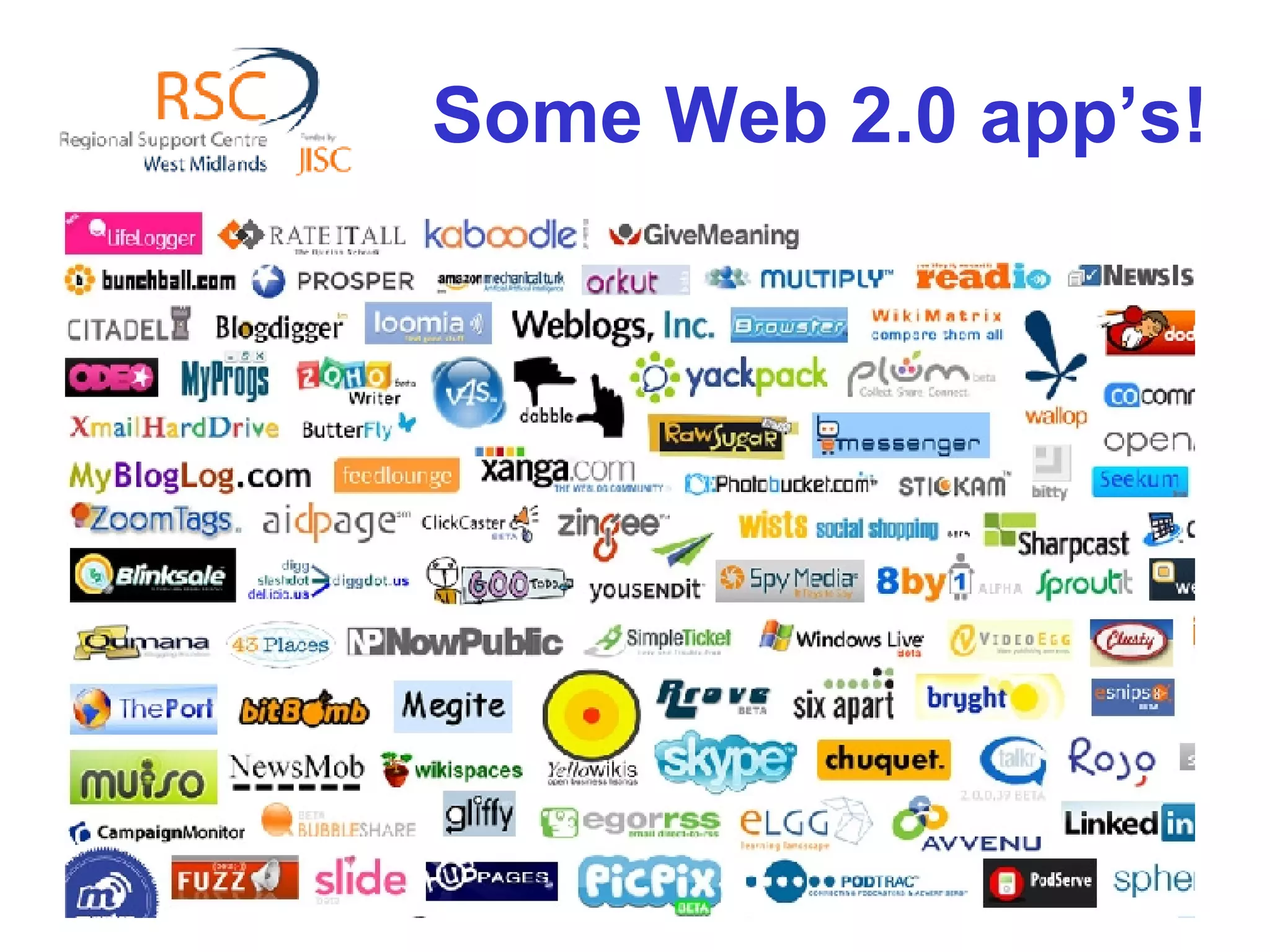
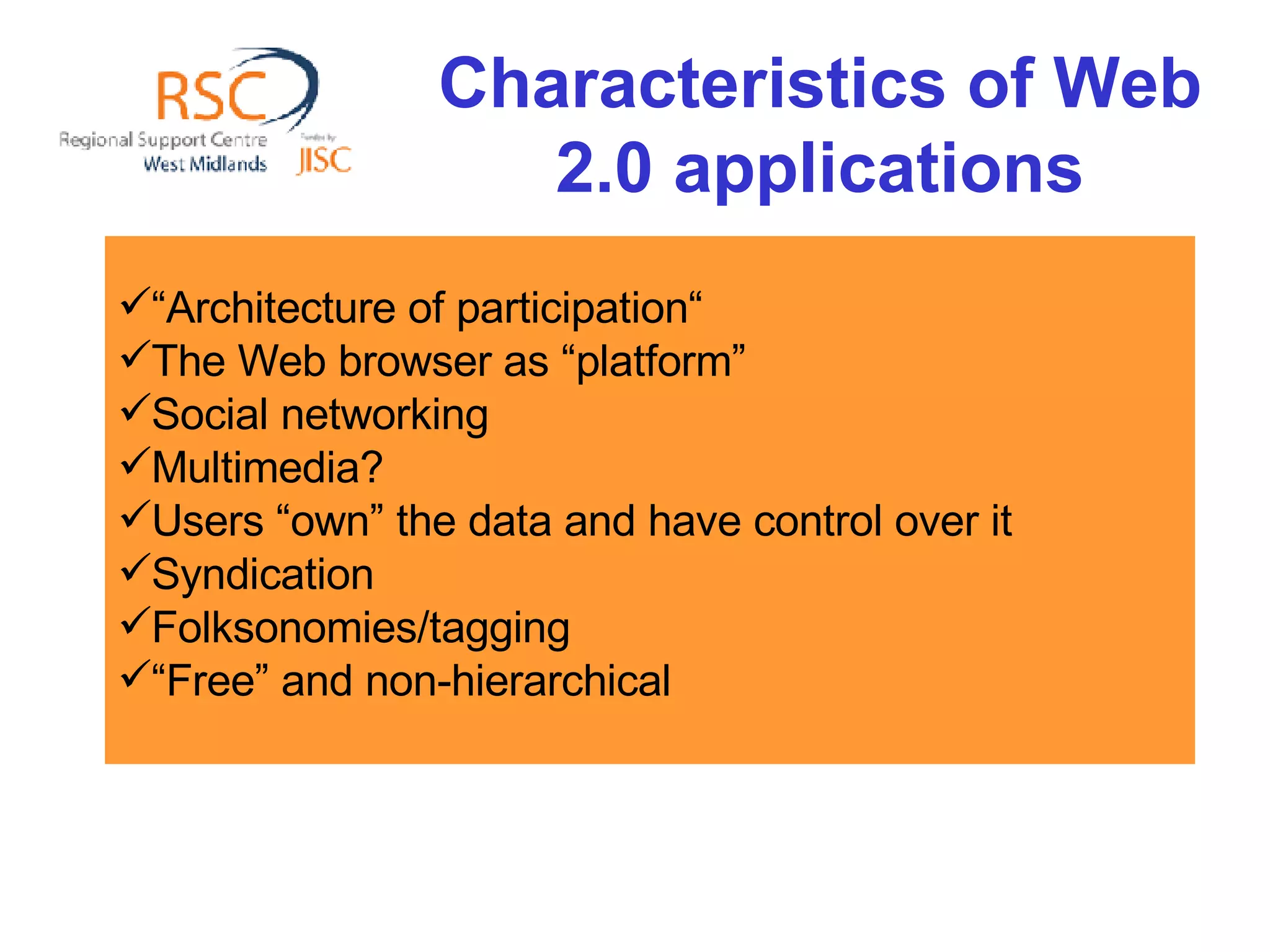
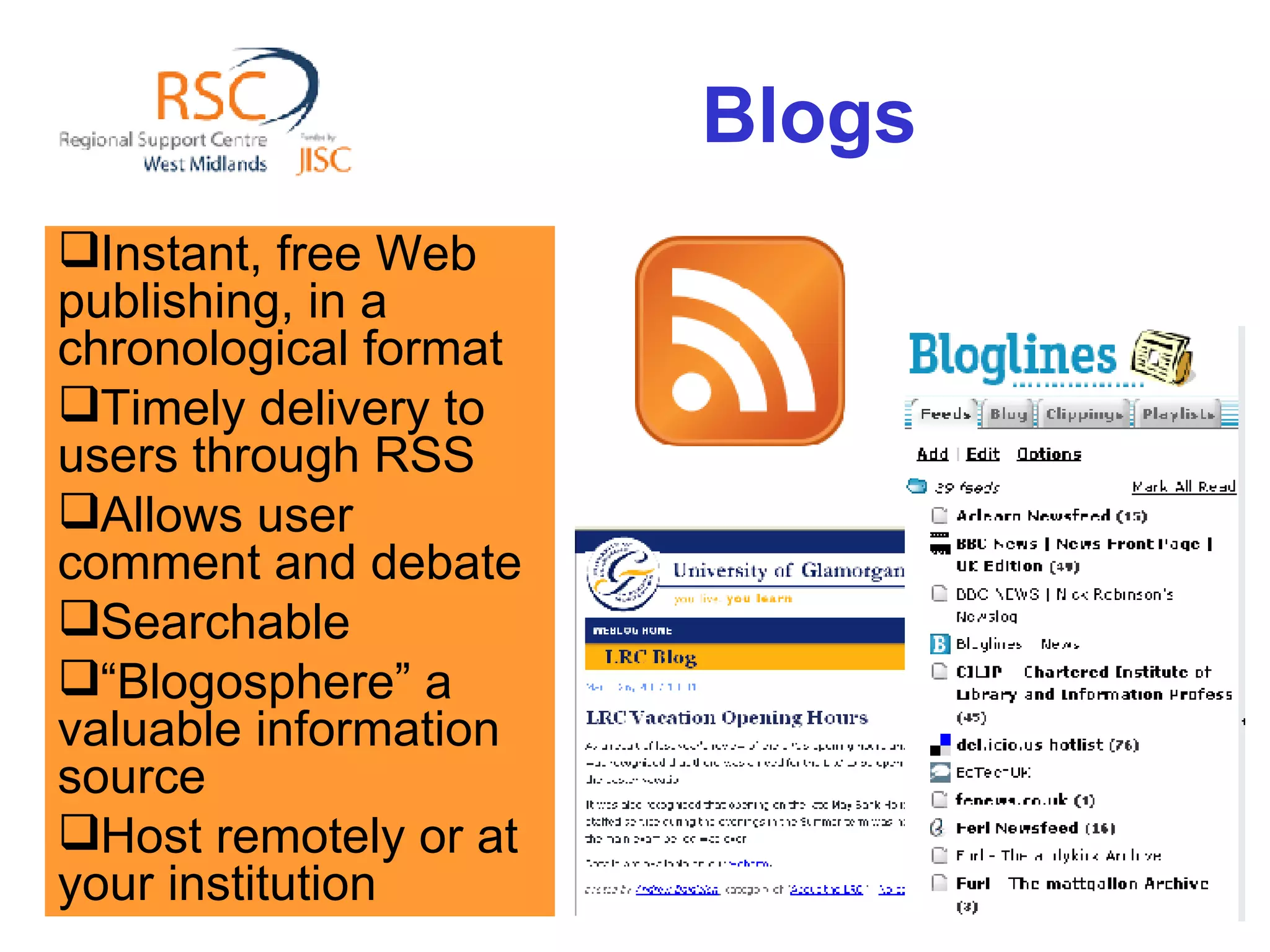
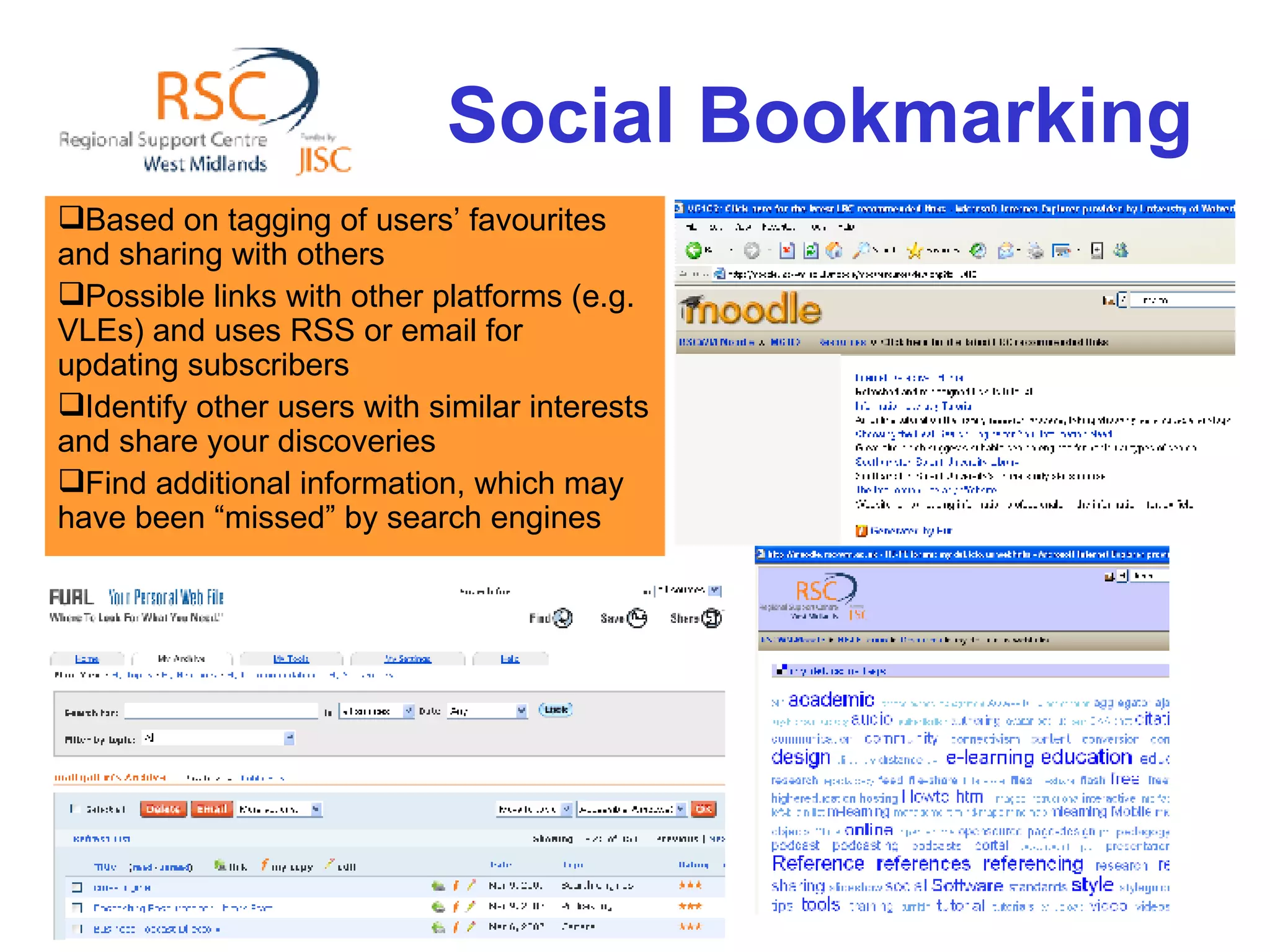
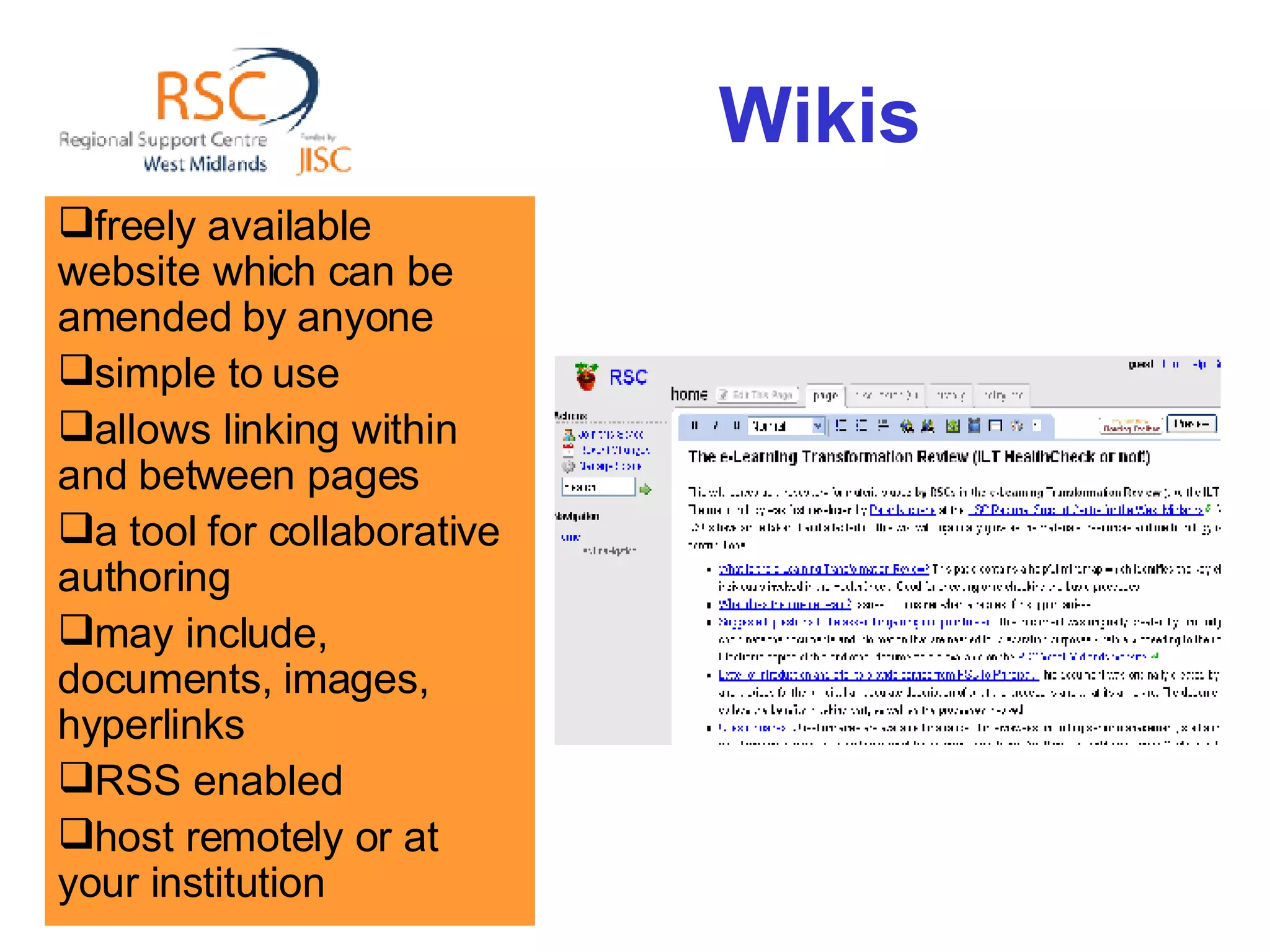
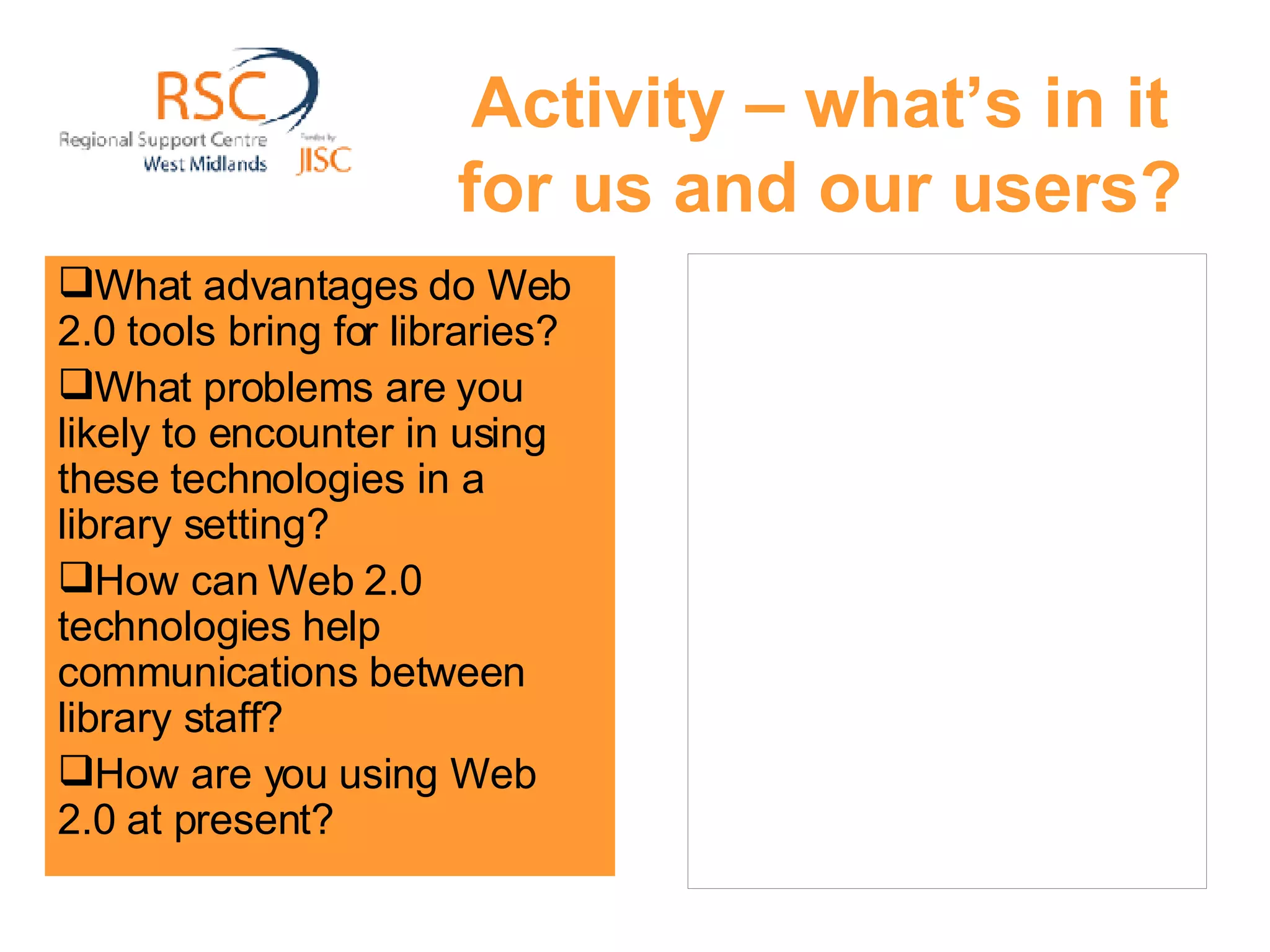
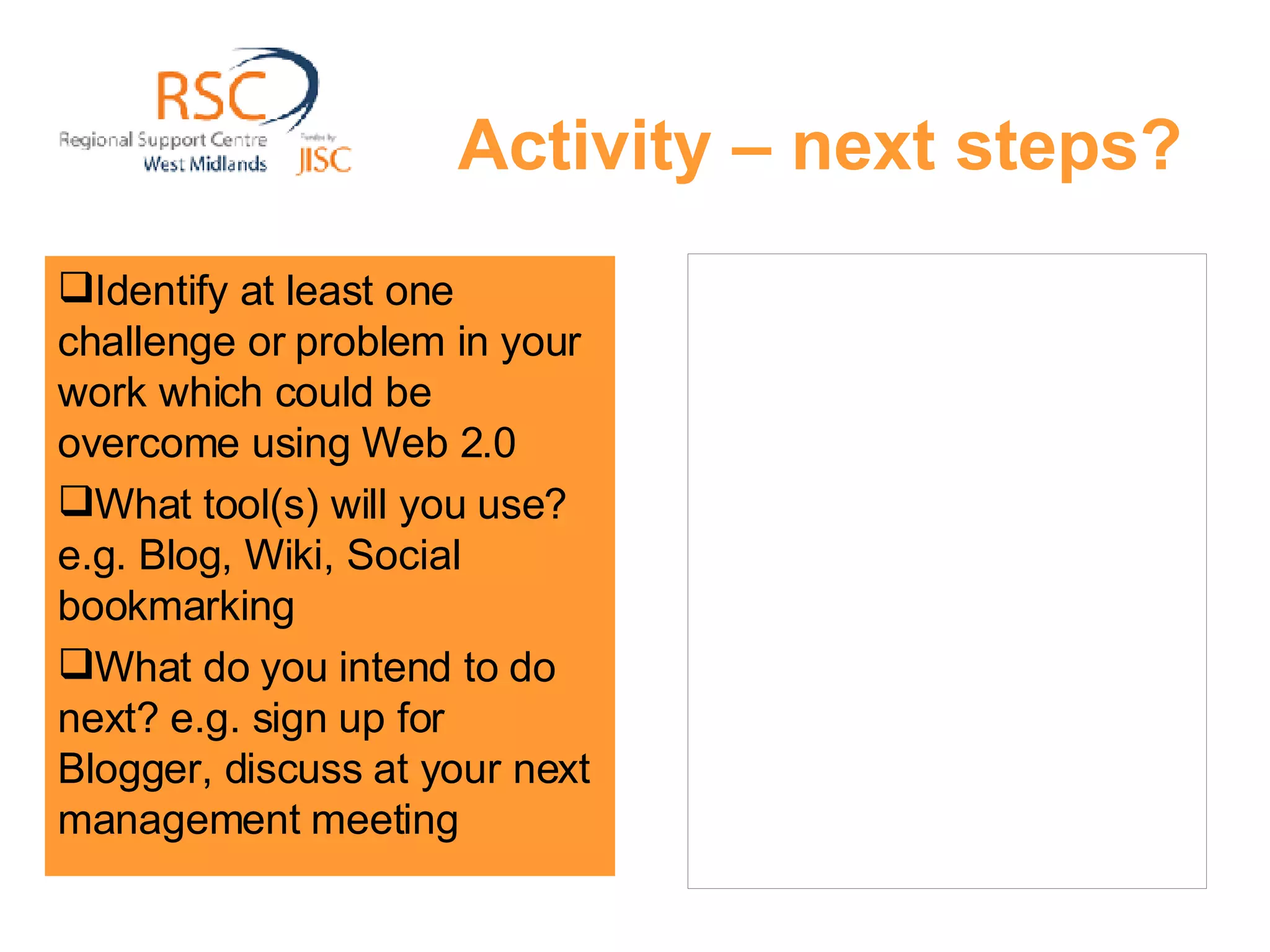
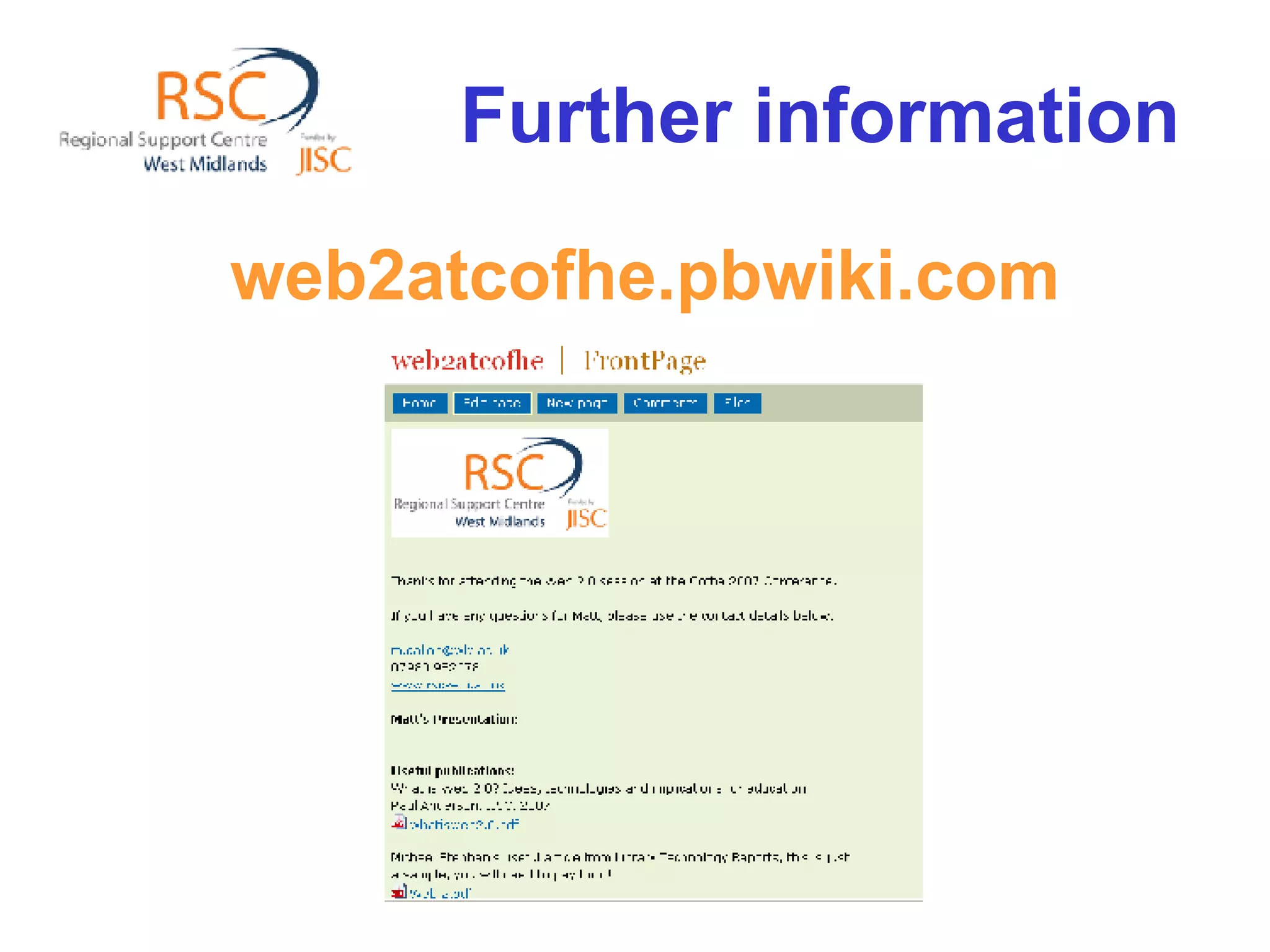
![Any questions? Do get in touch… [email_address] web2atcofhe.pbwiki.com www.rsc-wm.ac.uk](https://image.slidesharecdn.com/mattsslides3603/75/Mattsslides-12-2048.jpg)